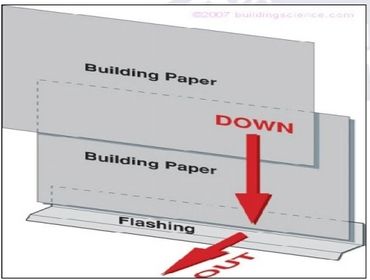WHAT IS STUCCO?
Stucco cladding is a siding material made of Portland cement, sand, lime, and water. Applied in three coats, it provides a solid, durable, and seamless home exterior. Some advantages of stucco include a natural resistance to fire, lasting durability, and low maintenance.
Stucco is one of many reservoir cladding options. Claddings made of wood, fiber cement, stucco, concrete, and masonry all absorb water to varying degrees.
Hardcoat stucco systems are susceptible to moisture damage if not properly applied, caulked and flashed. In recent years it has been discovered that severe damage has been occurring behind stucco walls that is often unseen. Through our research 85% of home owners do not know there is an issue occurring. It is typically only through professional testing that these deficiencies or damage are discovered.
The amount of water absorbed must be controlled with correct installation of windows, doors, and flashing. Flashing refers to thin pieces of impervious material installed to prevent the passage of water into a structure from a joint or as part of a weather resistant barrier.
The water that is absorbed must be allowed to drain through the use of drainage planes. Drainage planes are water repellent materials (building paper, house wrap, sheet membranes, etc) that are located behind the cladding and are designed and constructed to drain water that passes through the cladding. They are interconnected with flashings, window and door openings, and other penetrations of the building enclosure to provide drainage of water to the exterior of the building.
Further, any penetration through the stucco that is left unsealed will allow entry of moisture or bulk water. Even an average size home can have an extreme number of penetrations, including:
1. electrical boxes
2. exterior receptacles
3. light fixtures
4. plumbing lines and faucets
5. cable TV lines
6. satellite dish mounts
7. security systems
8. gutter straps
9. shutter brackets
10. deck rail penetrations
11. gas lines
12. dryer vents
13. telephone lines
14. damaged or punctured areas of stucco
Although an invasive moisture test is necessary to determine levels of moisture and damage behind stucco and other reservoir cladding, there are some visual checks that can be done to determine if moisture intrusion is likely.
Window and door head flashing, roof kickout flashing, expansion joints, proper terminations with weep screed and termination beads, along with properly layered weather resistant barriers and rain screens are integral to the health of the cladding and overall home.
If these components are missing or improperly installed, excess moisture can penetrate and be retained by the wood sheathing and framing, causing rot and mold.
HEAD FLASHING, KICKOUT FLASHING, WEEP SCREED






Contact Us
Stucco remediation. Stucco repair.
Remediation Done Right
967 S Matlack St, West Chester, Pennsylvania 19382, United States